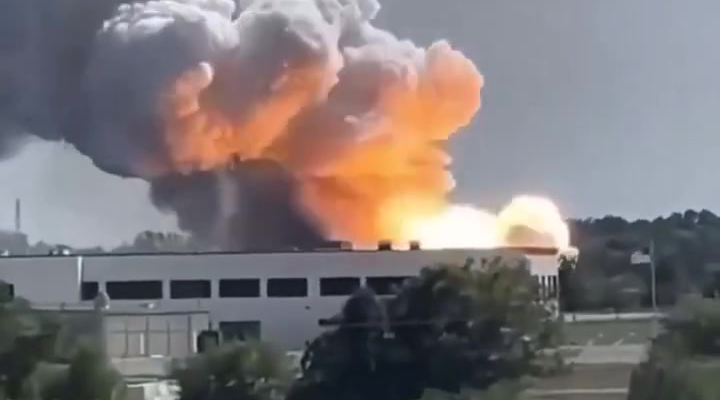Emergencies can strike unexpectedly, reminding communities of the critical importance of safety awareness, preparedness, and timely communication. Recently, Newburgh, Indiana, experienced a chemical fire that prompted local authorities to issue precautionary measures to safeguard residents. While the fire was brought under control efficiently, the incident underscored a broader lesson: understanding the risks, responding effectively, and maintaining clear communication are vital for community resilience.
This article delves into the Newburgh incident, explores why public safety advisories are issued, and provides actionable insights for families and communities to stay safe during chemical or environmental emergencies. Along the way, we’ll highlight essential lessons in emergency preparedness, community cooperation, and long-term recovery.
What Happened in Newburgh?
On an ordinary afternoon in Newburgh, Indiana, emergency reports surfaced about a fire involving chemical materials. According to local authorities, the fire broke out at a facility that stored industrial substances. The presence of these chemicals increased the potential risk for nearby residents, prompting the city to issue precautionary advisories recommending that people limit outdoor activity and keep windows and doors closed until air quality assessments were complete.
By approximately 3:33 PM CDT, multiple fire crews had arrived at the scene. First responders immediately began assessing the situation, containing the blaze, and monitoring air quality. Residents turned to social media and local news outlets for updates, but authorities emphasized the importance of relying on verified information from official channels to avoid confusion or unnecessary panic.
While no immediate injuries were reported, the event served as a stark reminder that chemical fires can pose invisible hazards that go beyond flames and smoke. Understanding these risks is essential not only for those directly affected but also for any community striving to enhance its emergency preparedness.
Why Authorities Issue Shelter-in-Place Advisories
When chemical fires occur, local governments and emergency management teams may issue shelter-in-place advisories. These alerts are preventive measures designed to protect residents while first responders assess and control the situation.
Chemical fires differ from ordinary fires in the potential harm their smoke and fumes can pose. Unlike fires involving wood or paper, chemical fires may release toxic gases or fine particulate matter into the air, which can irritate the eyes, throat, and respiratory system. A shelter-in-place advisory allows residents to stay indoors, reduce exposure, and give emergency teams the time they need to contain the fire safely.
about:blank
Key actions during a shelter-in-place advisory include:
- Closing all doors, windows, and vents to minimize air infiltration
- Turning off heating or cooling systems that draw outside air into the home
- Limiting unnecessary movement outside until official updates indicate it is safe
These precautions may seem minor, but collectively they play a significant role in protecting public health during chemical emergencies.
The Science Behind Chemical Fires
To understand the urgency of advisories and emergency measures, it helps to explore what makes chemical fires particularly hazardous.
Composition of Materials
Chemical fires often involve industrial solvents, plastics, or other synthetic compounds. When ignited, these materials can release toxic gases such as carbon monoxide, formaldehyde, or other volatile organic compounds. Unlike typical house fires, which primarily produce smoke from paper, wood, or textiles, chemical fires have the potential for more unpredictable and dangerous airborne pollutants.
Smoke Behavior
The behavior of smoke from chemical fires is influenced by wind, humidity, and temperature. These factors can carry harmful particles beyond the immediate vicinity of the fire, sometimes affecting neighboring residential areas. This unpredictability is why authorities may issue precautionary advisories even to communities not in direct proximity to the blaze.
Health Implications
Exposure to chemical smoke can range from mild irritation of the eyes, nose, or throat to more serious respiratory complications in vulnerable populations, including children, the elderly, and those with pre-existing conditions. Emergency personnel continuously monitor air quality during these incidents to ensure that residents are not exposed to harmful levels of pollutants.
Specialized Emergency Response
Firefighters responding to chemical fires require specialized protective equipment, including respirators, chemical-resistant suits, and monitoring devices. Traditional firefighting methods are often supplemented with foam suppressants or other neutralizing agents designed to reduce the release of hazardous fumes.
How Emergency Crews Respond
Responding to a chemical fire involves a multi-step, highly coordinated approach to protect both the public and emergency personnel. Key steps include:
- Assessment of the Scene
First responders evaluate the type and quantity of chemicals involved. Unknown substances are treated with caution, guided by standardized protocols for hazardous materials (HAZMAT) incidents. - Containment Measures
Containing the fire quickly prevents further spread and limits the production of toxic smoke. Depending on the chemical type, crews may use specialized foams, barriers, or neutralizing agents. - Air Quality Monitoring
Environmental specialists continuously measure airborne pollutants. These readings inform whether residents can safely return outdoors or must remain sheltered. - Public Communication
Clear, timely updates are essential. Authorities utilize emergency alert systems, verified news outlets, and social media to provide accurate information, including instructions on evacuation or sheltering in place.
By coordinating these steps, emergency teams can minimize harm and maintain public trust during stressful incidents.
The Importance of Verified Information
In any emergency, misinformation spreads quickly. Social media often amplifies rumors, which can lead to confusion or panic. During the Newburgh incident, officials stressed the importance of relying on:
- Local fire departments and HAZMAT teams
- County emergency management agencies (EMA)
- City or county public information officers
- Verified news outlets
Following official guidance ensures residents receive accurate, actionable information rather than speculation. This approach not only protects individual safety but also enables first responders to carry out their duties without interference.
Practical Steps Residents Can Take
For families and individuals in areas affected by chemical fires, taking proactive steps can significantly reduce risk. Key measures include:
- Follow Official Instructions
Always prioritize emergency directives, whether it involves sheltering in place, evacuation, or avoiding specific areas. - Seal Your Home
Close windows, doors, and vents. Turn off HVAC systems that draw outside air. Consider using damp towels to seal gaps in doors if necessary. - Prepare an Emergency Kit
Stock essentials such as bottled water, non-perishable food, first-aid supplies, and masks to ensure short-term self-sufficiency during shelter-in-place orders. - Stay Connected
Keep updated through official websites, emergency alert apps, or local radio stations. These channels provide the most reliable information during fast-moving situations. - Check on Neighbors
Elderly residents, people with disabilities, or those living alone may require assistance during emergencies. Community support fosters resilience and safety. - Limit Panic
Remember, advisories are precautionary measures, not indicators of guaranteed danger. Remaining calm helps both you and emergency personnel respond more effectively.
Broader Lessons from the Incident
The Newburgh chemical fire serves as a case study in emergency preparedness and community resilience. Some important takeaways include:
- Preparedness Matters: Communities with established communication networks and practiced emergency drills respond more efficiently.
- Everyday Habits Count: Knowing how to seal your home, turn off HVAC systems, and prepare emergency kits can make a significant difference during advisories.
- Collaboration is Key: Effective response requires teamwork among residents, emergency personnel, and local authorities.
These lessons are valuable not only for chemical fires but for a wide range of emergencies, including severe weather, industrial accidents, or public health crises.
Environmental Considerations
Chemical fires also pose risks to the environment. Depending on the substances involved, residues may impact soil and water quality, requiring ongoing monitoring and remediation. Environmental agencies often continue testing long after the fire is extinguished to ensure public safety and prevent long-term ecological damage.
For instance, runoff from firefighting efforts can introduce chemicals into nearby streams, while airborne particulates may settle on crops or playgrounds. Authorities carefully balance the need for rapid response with the long-term goal of preserving environmental health, emphasizing why patience and adherence to advisories are crucial.

Community Resilience and Recovery
After a chemical fire, recovery extends beyond extinguishing flames. Community resilience encompasses:
- Reassurance from Authorities: Clear public communication about air quality, cleanup progress, and safety reassessments helps restore confidence.
- Support for Residents: Assistance programs may provide temporary relief or resources for those directly impacted.
- Learning and Improvement: Post-incident evaluations help authorities refine emergency response protocols, ensuring better preparedness for future events.
Communities that approach emergencies with a coordinated, informed strategy often emerge stronger, with increased trust in local institutions and improved preparedness for subsequent challenges.
Emotional and Social Impact
Emergencies like chemical fires can take a toll on residents’ emotional well-being. Fear, uncertainty, and disruption of daily routines may heighten stress levels. Recognizing this, communities often provide emotional support resources such as counseling, neighborhood check-ins, and public information sessions.
Additionally, these events can foster a sense of shared responsibility. When neighbors check on each other, local authorities provide clear guidance, and families prepare in advance, communities collectively demonstrate resilience and unity—an inspiring reminder of the power of cooperation in the face of adversity.
Final Thoughts
The chemical fire in Newburgh, Indiana, highlights how quickly unexpected emergencies can occur and the importance of community safety measures. Shelter-in-place advisories, while precautionary, offer vital protection while first responders work to control hazards and assess environmental risks.
Key takeaways for all communities include:
- Public Education is Essential: Regular training and information dissemination empower residents to act wisely during emergencies.
- Depend on Official Information: Verified sources reduce misinformation, helping residents make informed decisions.
- Collective Responsibility Matters: Safety is a shared effort, requiring vigilance, cooperation, and compassion.
Ultimately, understanding chemical fires, emergency protocols, and environmental considerations equips communities to respond effectively, protect lives, and recover confidently. Staying informed, prepared, and connected ensures that residents not only survive but thrive in the face of unexpected challenges.



